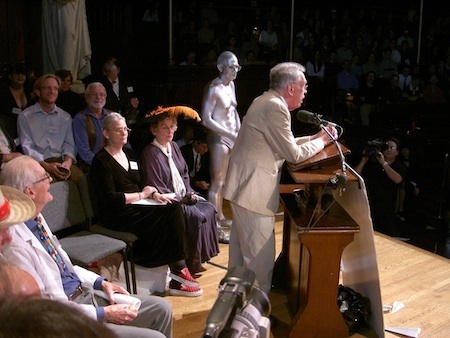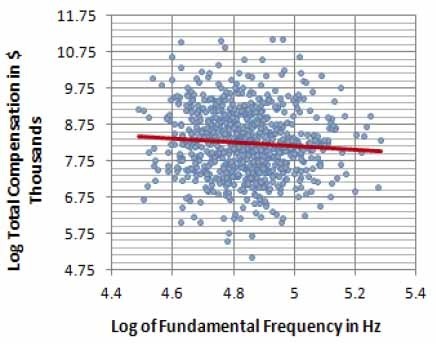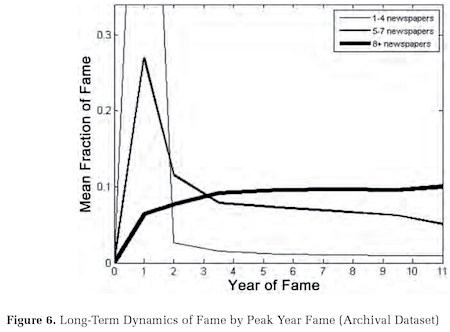Marc Abrahams's Blog, page 494
May 9, 2013
Congratulations to New York’s most efficiently irritable man
Tomorrow Professor John Trinkaus — New York City’s most efficiently irritable man — will give his last lecture at the Zicklin School of Business, where he has taught for fifty years.
Professor Trinkaus was awarded the 2003 Ig Nobel Prize for literature, for meticulously collecting data and publishing more than 80 detailed academic reports about things that annoyed him (such as: What percentage of young people wear baseball caps with the peak facing to the rear rather than to the front; What percentage of pedestrians wear sport shoes that are white rather than some other color; What percentage of swimmers swim laps in the shallow end of a pool rather than the deep end; What percentage of automobile drivers almost, but not completely, come to a stop at one particular stop-sign; What percentage of commuters carry attaché cases; What percentage of shoppers exceed the number of items permitted in a supermarket’s express checkout lane; and What percentage of students dislike the taste of Brussels sprouts.)
86 of Professor Trinkaus’s publications are listed in “Trinkaus — An Informal Look,” Annals of Improbable Research, vol. 9, no. 3, May/Jun 2003. The photo below shows Professor Trinkaus at the Ig Nobel Prize ceremony at Harvard, expressing his irritation:

BONUS: Simon Black’s small but heartfelt tribute to Professor Trinkaus
BONUS: Science Now‘s look at some of Professor Trinkaus’s irritated research about Santa Claus
BONUS: Professor Trinkaus’s entire body of annoyed research was donated (by me) to The Museum of Curiosity

Researchers Love Bears
Some researchers do research about bears. Some researchers do research about Bears. This new study is about Bears:
“Physical, Behavioral, and Psychological Traits of Gay Men Identifying as Bears,” David A. Moskowitz [pictured here], Jonathan Turrubiates, Hector Lozano, Christopher Hajek, Archives of Sexual Behavior, epub April 2013. The authors, at The New York Medical College in Valhalla, New York and the University of Texas at San Antonio, explain:
“The Bear community exists as a subculture in reaction to the larger gay community. It rejects the normative idealized male beauty revered by mainstream gay men. While qualitative data document such self-identifiers as masculine-acting gay men who weigh more and have more body hair, there has to date been no quantitative analysis of this group’s characteristics. In response, we conducted two large-scale studies of gay men identifying as Bears (n = 469) to survey their self-reported physical, behavioral, and psychological traits. Our studies indicated that Bears were more likely to be hairier, heavier, and shorter than mainstream gay men…. [Our research] may explain how the Bear culture developed to ensure that even the heaviest, hairiest, and/or shortest individual can partner.”
(Thanks to investigator Neil Martin for bringing this to our attention.)
Researchers who study bears, rather than Bears, all take a back seat, one way or another, to Troy Hurtubise. Troy was awarded the 1998 Ig Nobel Prize for safety engineering, for developing, and personally testing a suit of armor that is impervious to grizzly bears. We have written about some of his subsequent adventures, too. Much of Troy’s original work is documented in the film “Project Grizzly“. This video shows a bit of that:
Other researchers invented an alternative to Troy’s inventions.

May 8, 2013
Batman, (a) psychoanalyzed and (b) fallen
Academics are drawn to Batman, as Batman is drawn to trouble. Here are two academic analyses of the caped crusader.
“‘Holy PTSD, Batman!:’ An Analysis of the Psychiatric Symptoms of Bruce Wayne,” S. Taylor Williams, Academic Psychiatry, 36:3, May-June 2012. (Thanks to Amy Mauritson for bringing this to our attention.)
And…
“Trajectory of a Falling Batman,” D.A. Marshall, T.O. Hands, I. Griths, G. Douglas, Journal of Physics Special Topics, vol. 10, no. 1, 2011, A2 9. (Thanks to Richard Baguley and Tim Smith for bringing this to our attention.) The authors, at the University of Leicester, UK, report:
“The film Batman Begins shows the character of Batman gliding using a rigid form of his cape. This paper assesses the feasibility of such a glide and finds that while a reasonable distance could be travelled if gliding from a tall building, the speed at which Batman would be travelling would be too dangerous to stop without some method of slowing down.”
BONUS: The science of the city of Batman, Turkey

More Flying Saucer Patents (Russian Federation style)
The United States Patent and Trademark Office is not the only blue-chip global-reach official authority which grants patents to the inventors of spacefaring ‘flying saucers‘. So does Федеральная служба по интеллектуальной собственности (Роспатент) (The Federal Service for Intellectual Property in Russia, a.k.a. Rospatent).
See, for example :
AEROSPACE AIRCRAFT (RF Patent № 2436715)
The design of the saucer takes as inspiration a(n) ‘UFO’ which, says the patent, was photographed by military photojournalist Volans Lytvyn during ‘Operation Mainbrace‘ in 1952 (though sadly the document doesn’t reproduce the photo).
[NOTE: The (rough) English translations below are provided courtesy Google]
“The claimed invention is directed to solve the technical problem of creating an aerospace aircraft to ensure the continuation of research in the near and far space, using interplanetary space stations (hereinafter – MKS).”
Also see: The cab accommodation of passengers, crews, equipment (RF Patent № 2327607)
“
The cabin accommodation of passengers, crew, equipment (KPEO) contained power supply system, the life support system. In the manufacture of the cab, not the carriage of passengers, can be mounted escape system by pilots of aircraft (LA) to activate the mechanism of remote unlocking fireworks shooting spherical sliding cover 10 and drives the ejection seats 27. [...] When flying in space sector 31 can be converted into an airlock to exit astronauts into space. “
BONUS: There are many, many more Russian Federation flying saucer patents, but, despite their looks, they are mostly vehicles which are designed to fly within the Earth’s atmosphere rather than outer space. Click the images below to view the patent.

Voice pitch ==> CEO remuneration (correction: up is down)
Our eagle-eyed readers my have spotted a curiosity in the abstract for a forthcoming paper in Evolution & Human Behavior. ‘Voice pitch and the labor market success of male chief executive officers’
Specifically, the sentence :
“For the median CEO of the median sample firm, an interquartile increase in voice pitch (22.1Hz) is associated with a $440 million increase in the size of the firm managed, and in turn, $187 thousand more in annual compensation.”
Which should read :
“For the median CEO of the median sample firm, an interquartile decrease in voice pitch (22.1Hz) is associated with a $440 million increase in the size of the firm managed, and in turn, $187 thousand more in annual compensation.”
In other words, the lower their voice, the more they can expect to earn.
The paper can be read in full here – note the full text has the effect described the right way round. (section 3.1)
[Many thanks to Professor Mayew at Duke University for his clarification.]

May 7, 2013
Ig Nobel at The University of Geneva (and webcast) tonight!

Tonight we’re doing a big Ig Nobel show at the University of Geneva. Please join us:
UNIVERSITY OF GENEVA
Tuesday, May 7, 6:30 pm, Geneva time. [TWITTER: #IgNobelGVA]
Uni Dufour, Rue Général-Dufour 24.
Show en anglais, sans interprétation.Admission is FREE.
And the event will be webcast live (6:30 pm Geneva time / 12:30 pm US east coast time), at http://www.unige.ch/presse/static/video/2013/ig_nobel.htmlThe University of Geneva show be hosted by Marc Abrahams. The show features genuine Ig Nobel Prize winners, who will explain, as best they can, what they did and why they did it:
Stephan Bolliger and Steffen Ross (is it better to be smashed on the head with a full bottle of be, or to be smashed on the head with an empty bottle of beer?)
Bart Knols (malaria mosquitoes are strongly attracted to the smells of Limburger cheese and human feet)
Kees Moeliker (homosexual necrophilia in the mallard duck)The show also features songs from Ig Nobel operas, performed by:
soprano Maria Ferrante and
pianist Alice Martelli
The show is co-sponsored by CERN and the University of Geneva. [NOTE: Last week, Marc and Maria and Alice all took part in TEDxCERN. Now Stephan and Steffen and Bart and Kees are all joining them for this big event at U Geneva.]

May 6, 2013
Nose-Picking in the Pongidae and Its Implication
The Primate Nooz concocts discoveries and discussions about primates. Perhaps its finest production is a document called ”Nose-Picking in the Pongidae and Its Implication for Human Evolution”. The piece begins:
Nose-picking and subsequent consumption of nasal detritus are activities that have been widely observed among extant species of pongids, and that appear to be almost instinctive behavior patterns in most, if not all, human groups (Barnesdale, 1975; Glicks, 1978; Bidwell and MacCown, 1979; Stevens, 1981; Marshall et. al., 1983; and Harrison, 1986). Since it has not been recorded in the Cercopithecoidea (James, 1982), it is suggested that it represents a behavioral adaptation that arose some time after the hominoids diverged from the Old World monkeys approximately 20 million years ago….
(Thanks to investigator Janet Rosenbaum for bringing this to our attention.)

The Moth to Flame Effect – is it real or not real?
‘The Moth to a Flame Effect’ (a.k.a ‘Perceptual Tropism’), was first formally described in 1953 by Clark, Nicholson and Graybiel in their paper ‘Fascination: a cause of pilot error‘ (for Journal of Aviation Medicine, 24(5):429-40.) Unfortunately, the paper doesn’t appear to be available online, but it describes how aircraft pilots sometimes fail to take evasive action in dangerous situations because they are concentrating too hard on a detail – one which in hindsight turns out to be insignificant. To an outside observer, it can look as if the pilot is being mysteriously drawn towards the danger.
The alarming video below, entitled: ‘The Moth Effect : Alerting Motorists to Dangerous Human Instincts‘ (courtesy PoliceUSA.com), shows how the same effect can manifest itself in car drivers . . .
Or does it?
A 2004 study by Jeffrey W. Muttart, (IMPACT, Volume: 13, Issue Number: 3) asserts that the Moth to Flame Effect is, in fact, a myth. At least in the context of drivers who appear to be inexplicably drawn towards the lights of another vehicle. See: Examining the myth of perceptual tropism or the moth-to-flame phenomena: Myth busted!

May 5, 2013
Cafeteria Review: CERN
Three Improbable Research persons (I am one of them) are at CERN for a few days. We sometimes dine in CERN’s main cafeteria, and are delighted at the goodness of the food and the general atmosphere — and equally delighted at the kindness, friendliness, and relaxed cheeriness of the people who work at the cafeteria.
It’s all even better than what Lois Malone in 1996 when she did a review of the CERN cafeteria, in the Annals of Improbable Research.

Very Famous People Are Famous for More than 15 Minutes
Four famous sociologists conclude that very famous people are famous for more than fifteen minutes, and that people who are less-than-very famous tend to be famous for only a short time. They published this study:

Famous sociologist Arnout van de Rijt
“Only 15 Minutes? The Social Stratification of Fame in Printed Media,” Arnout van de Rijt [pictured here], Eran Shor, Charles Ward, and Steven Skiena, American Sociological Review, vol. 78, no. 2, 2013, pp. 266–289. The authors explain:
“Contemporary scholarship has conceptualized modern fame as an open system in which people continually move in and out of celebrity status. This model stands in stark contrast to the traditional notion in the sociology of stratification that depicts stable hierarchies sustained through classic forces such as social structure and cumulative advantage. We investigate the mobility of fame using a unique data source containing daily records of references to person names in a large corpus of English-language media sources. These data reveal that only at the bottom of the public attention hierarchy do names exhibit fast turnover; at upper tiers, stable coverage persists around a fixed level and rank for decades. Fame exhibits strong continuity even in entertainment, on television, and on blogs, where it has been thought to be most ephemeral. We conclude that once a person’s name is decoupled from the initial event that lent it momentary attention, self-reinforcing processes, career structures, and commemorative practices perpetuate fame.”
Here is detail from the study:
(Thanks to Vaughan Bell for bringing this to our attention.)
BONUS: Famous researcher Eric Schulman’s study “Measurement: Who’s the most famous of them all?“, with links to other of Schulman’s quantitative studies of fame.

Marc Abrahams's Blog
- Marc Abrahams's profile
- 14 followers







